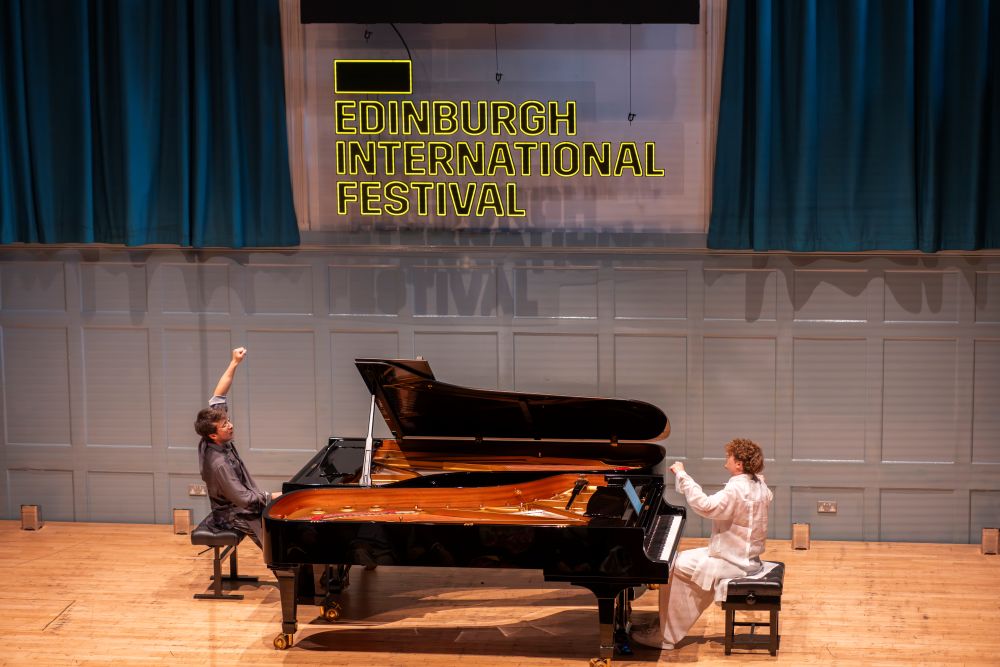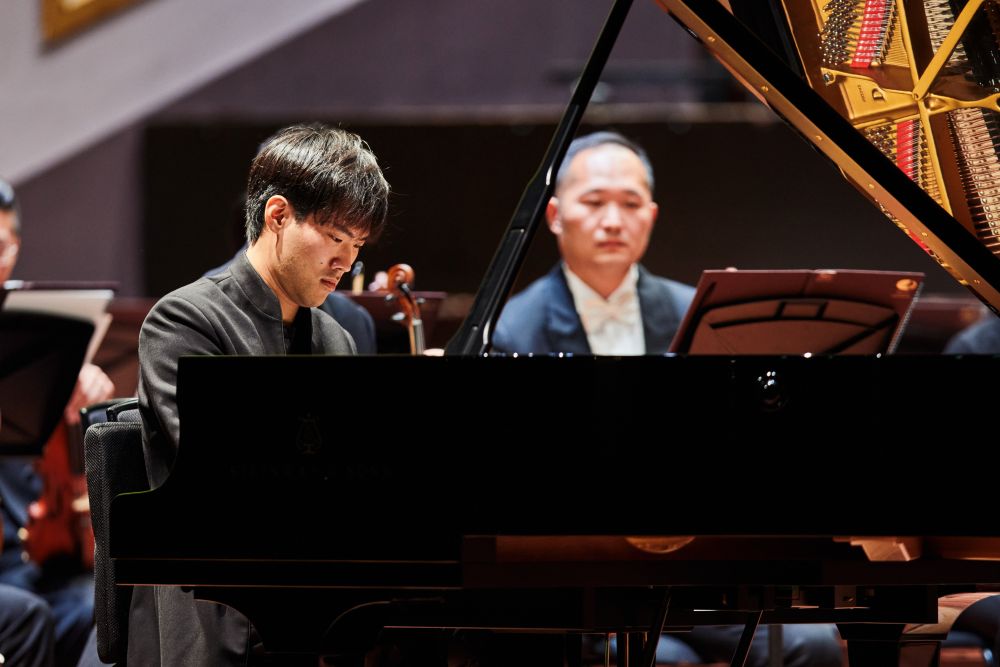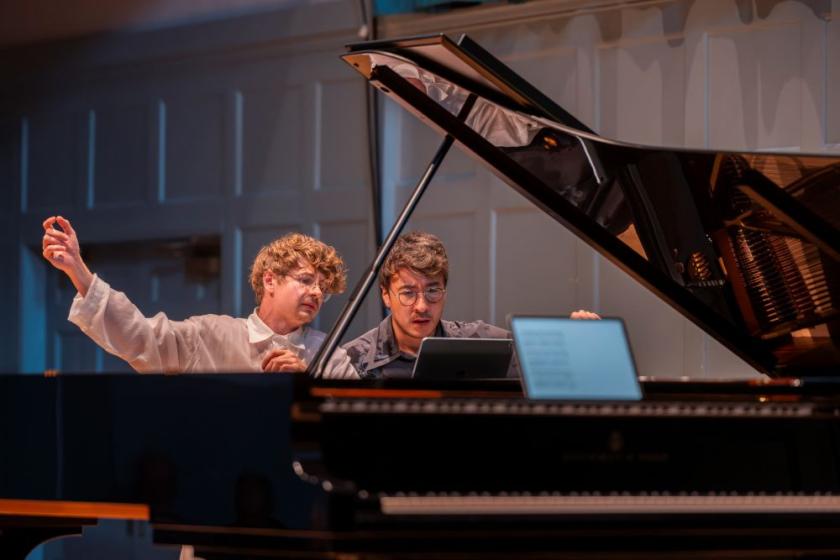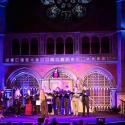Say what you like about this year’s slimmer-than-usual Edinburgh International Festival, but when it has hit the spot, it has done so triumphantly. Nowhere has that so far been truer than in the piano playing, as this pair of concerts demonstrated.
In the Queen’s Hall on Tuesday morning, Pavel Kolesnikov and Samson Tsoy joined forces in a programme of four-handed piano (★★★★★), sometimes on one keyboard and sometimes on two, that climaxed in a transcendent, dazzling, occasionally stupefying performance of Messiaen’s visionary Visions de l’Amen. From the very opening, Kolesnikov played the Creation theme with chorale-like clarity and hymnic intensity, while Tsoy’s transfigurative chords seemed to spiral heavenwards in a whirl of light.
There was a touch of a jive to the interplanetary dance of the second movement, with heavenly clouds of desire in the fourth, and the two players moved in exhilarating sync in the fifth movement "Amen of the Angels". Throughout, fistfuls of notes and implausible clusters of chords were dashed off with seeming insouciance, before the thrilling exaltation of the final consummation, the closing pages chiming with ecstasy in a performance that was as much of a joy to watch as to hear.  In total contrast, the first half was a selection of Bach Chorales as realised by György Kurtág, beginning and ending with the famous sonatina from the Actus Tragicus that sounded like a hard-won whisper of beauty under their fingers. The rest of the arrangements retained Bach’s transparent counterpoint filled out sensitively by Kurtág’s harmonies, be it in the dark brooding of Aus tiefer Not or the joyous leaping of Allein Gott in der Höh’ sei Ehr. They interspersed these meditations with selections from Kurtág’s Játékok which, for once, lived up to their name as games; playful, mischievous and, shockingly, fun!
In total contrast, the first half was a selection of Bach Chorales as realised by György Kurtág, beginning and ending with the famous sonatina from the Actus Tragicus that sounded like a hard-won whisper of beauty under their fingers. The rest of the arrangements retained Bach’s transparent counterpoint filled out sensitively by Kurtág’s harmonies, be it in the dark brooding of Aus tiefer Not or the joyous leaping of Allein Gott in der Höh’ sei Ehr. They interspersed these meditations with selections from Kurtág’s Játékok which, for once, lived up to their name as games; playful, mischievous and, shockingly, fun!
The pianistic star of the following evening (★★★★) was Bruce Liu (pictured below by Andrew Perry), who seemed to play Ravel’s Piano Concerto in G without ever so much as breaking a sweat. Everything was light, airy, flexible and dynamic, with a rippling cadenza and a gorgeous meditative flow to a slow movement where it seemed he was able to read the cor anglais player’s mind. For his encore he played a breathless but flawless performance of Chopin’s Fantaisie-Impromptu where every phrase was mellifluously realised, for all that it was dashed off. That's why he's a star.  The orchestra he shared the stage with was the resident orchestra of Beijing’s National Centre for the Performing Arts (known as the China NCPA Orchestra). They’re a relatively new ensemble, and this was their European debut. All of their razzle dazzle seemed to lie quite close to the surface, with sparkle and shine in playing that seemed just a little too bright at times. In that sense, however, Ravel’s concerto was a shrewd choice of repertoire with its filigree delicacy and jazzy lightness. In fact, it seemed to dance, not that you’d have expected that from the über-steady beat of conductor Myung-Whun Chung.
The orchestra he shared the stage with was the resident orchestra of Beijing’s National Centre for the Performing Arts (known as the China NCPA Orchestra). They’re a relatively new ensemble, and this was their European debut. All of their razzle dazzle seemed to lie quite close to the surface, with sparkle and shine in playing that seemed just a little too bright at times. In that sense, however, Ravel’s concerto was a shrewd choice of repertoire with its filigree delicacy and jazzy lightness. In fact, it seemed to dance, not that you’d have expected that from the über-steady beat of conductor Myung-Whun Chung.
There was much more weight to a performance of Saint-Saëns’ "Organ" Symphony that showed they knew how to have fun, with a cacophonous ending that was deliciously brash. It came, however, after a first movement with notably incisive string playing, and some sensationally lovely violin tone when the main theme of the slow section first appeared. Either way, it was a lot more fun than their companion piece, Qigang Chen’s Wu Xing (Five Elements). It’s one of the unwritten rules of touring that a visiting orchestra should bring a musical calling card from their homeland and, true to form, this one featured pentatonic ripples, chirping winds and exposed solo string lines. Ultimately, however, it didn’t offer much beyond an evanescent series of effects. I’d take a glitzy Organ Symphony over that any day.













Add comment